Life at high elevations isn’t just tough on people—it can challenge our four-legged companions, too. From thinner air to colder climates and unpredictable terrain, high-altitude living requires a special kind of resilience. Fortunately, some dog breeds are naturally equipped to handle these conditions thanks to centuries of adaptation and selective breeding.
You may have already encountered iconic mountain breeds like the tricolored Bernese Mountain Dog or the snow-white Great Pyrenees. Originally bred to guard livestock on rugged farms and slopes, these dogs aren’t just hard workers—they’re loyal, protective, and often make excellent family pets for those living in alpine or highland areas. Their sturdy builds, thick coats, and calm temperaments make them particularly suited for life above the clouds.
In this article, we’ll explore 7 remarkable dog breeds that thrive in high-altitude environments. Whether you live year-round in mountainous terrain or just love frequenting the peaks, these breeds offer the strength, stamina, and spirit to be the perfect companions for elevated living.
Dog Breeds for High-Altitude Living
1. Siberian Husky
Also known as the Chukchi dog or Sibe, the Siberian Husky hails from the frigid landscapes of Siberia, where it was originally bred by the Chukchi people for pulling sleds across long distances. According to the AKC, the Siberian Husky is loyal, friendly, and playfully mischievous.
These dogs gained international fame during the 1925 “Great Race of Mercy,” in which teams of Huskies, including the legendary lead dog Balto, transported life-saving serum through blizzard conditions to Nome, Alaska.
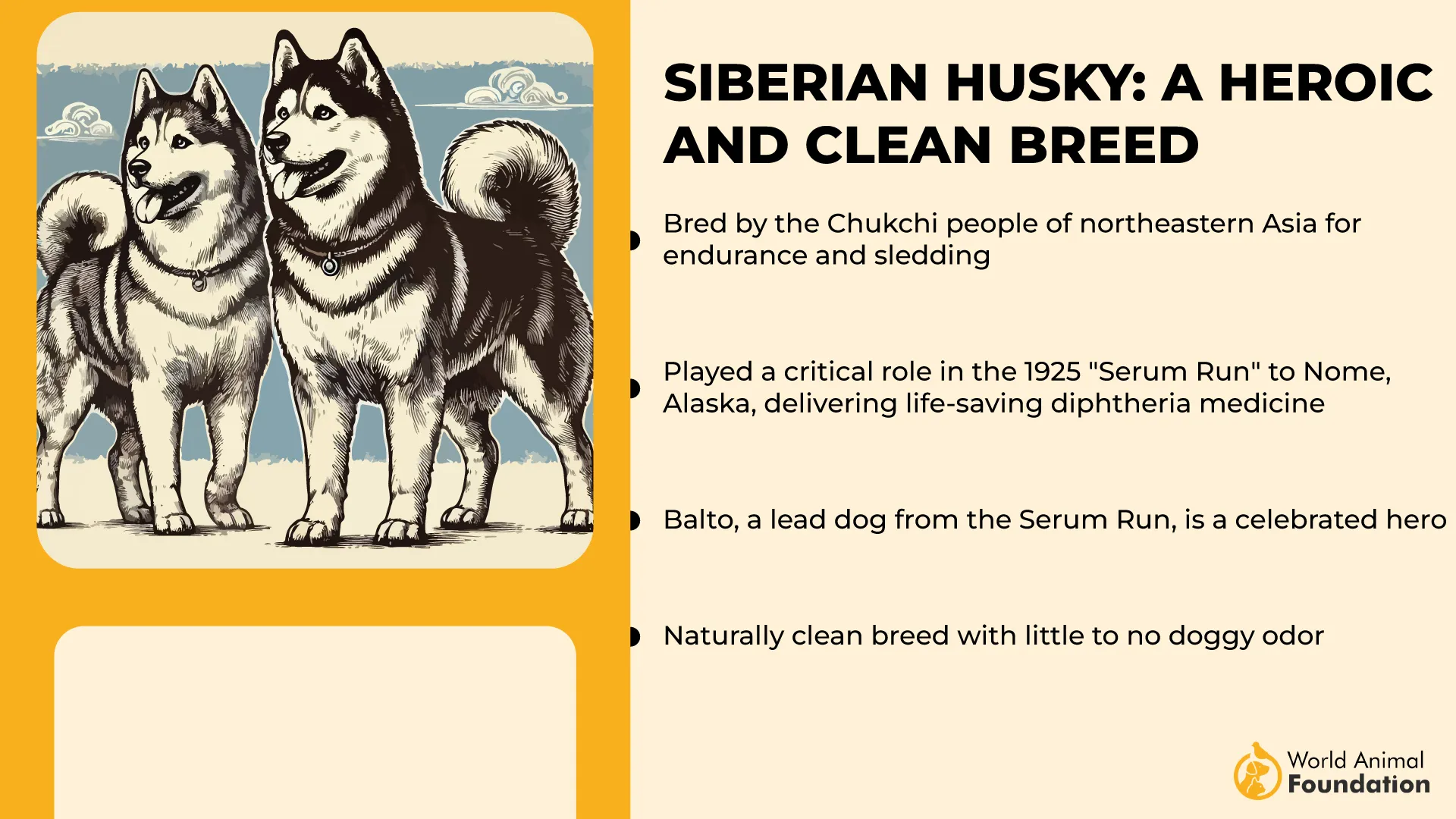
Ranging in height from 20 to 24 inches and weighing 35 to 60 pounds, this working breed is recognized for its thick double coat, muscular frame, and striking almond-shaped eyes. Their heritage makes them perfectly suited for high-altitude regions with cold temperatures and rugged terrain. They move effortlessly through snow, have impressive stamina, and thrive in active, community-oriented mountain lifestyles.
Care Needs
Siberian Huskies need ample physical activity, mental challenges, and space to roam. Their thick coat requires regular brushing, especially during shedding season. Due to their vocal nature and high energy, they are better suited for single-family homes rather than shared-wall living.
Fun Fact: In 2023, scientists found Balto shared ancestry with Tibetan Mastiffs and Greenland sled dogs, enhancing his legendary endurance.
2. Bernese Mountain Dog
Also known as the Berner, the Bernese Mountain Dog hails from the rugged farmlands near Berne, Switzerland, where it was bred to drive cattle, pull carts, and guard property. As the largest and only long-coated member of the four Swiss mountain dog breeds, the Berner is unmistakable with its striking tricolor coat—black, white, and rust.
Standing 23 to 27.5 inches tall and weighing between 70 to 115 pounds, this breed is both powerful and gentle. Berners offer loyalty, strength, and a sweet, even-tempered nature, making them excellent companions for high-altitude terrain and families alike.
Their hardy constitution and thick, silky coat provide natural insulation against the cold, while their calm demeanor makes them ideal for mountainous lifestyles.
Care Needs
Bernese Mountain Dogs need moderate daily exercise to maintain good health and happiness. Their long double coat sheds heavily year-round, so weekly brushing is essential—more during seasonal shedding.
Due to their size and dense coat, they do best in cooler climates and require regular grooming to keep matting and fur buildup under control. Britannica notes that due to the Bernese Mountain Dog’s substantial size, it needs living space and transportation that can comfortably accommodate its large frame without feeling confined.
Fun Fact: Berners are known for their bravery—some have even rescued people from house fires and ocean currents, earning them heroic reputations.
3. Tibetan Mastiff
Originally bred in the Himalayan highlands, the Tibetan Mastiff is perfectly suited for elevated environments. Sometimes referred to as a primitive breed, this ancient guardian was used by shepherds to protect livestock from predators in Tibet’s harsh alpine climate.
Ranging from 24 to 30 inches tall and weighing between 120 and 230 pounds, these majestic dogs are known for their dense double coats and commanding presence. While often mistaken for the English Mastiff or other Molossian types, the Tibetan Mastiff stands out with its lion-like mane and night-time alertness.
These dogs are known for their independence and protective instincts. Purina notes that this breed may be strong-willed, making it important to use a leash or have a secure fence in place during exercise to ensure safety and control. They’re not naturally trusting of strangers and require ample space to roam, making them a good match for secluded mountain homes.
Care Needs
Tibetan Mastiffs require regular grooming. Their thick coat should be brushed daily during shedding periods and at least twice a week otherwise. Bathing should occur frequently—ideally weekly, but no less than every six weeks—to prevent matting and maintain coat health.
Fun Fact: Tibetan Mastiffs are more active at night, a trait rooted in their history as nocturnal livestock guardians in the Himalayas.
4. Saint Bernard
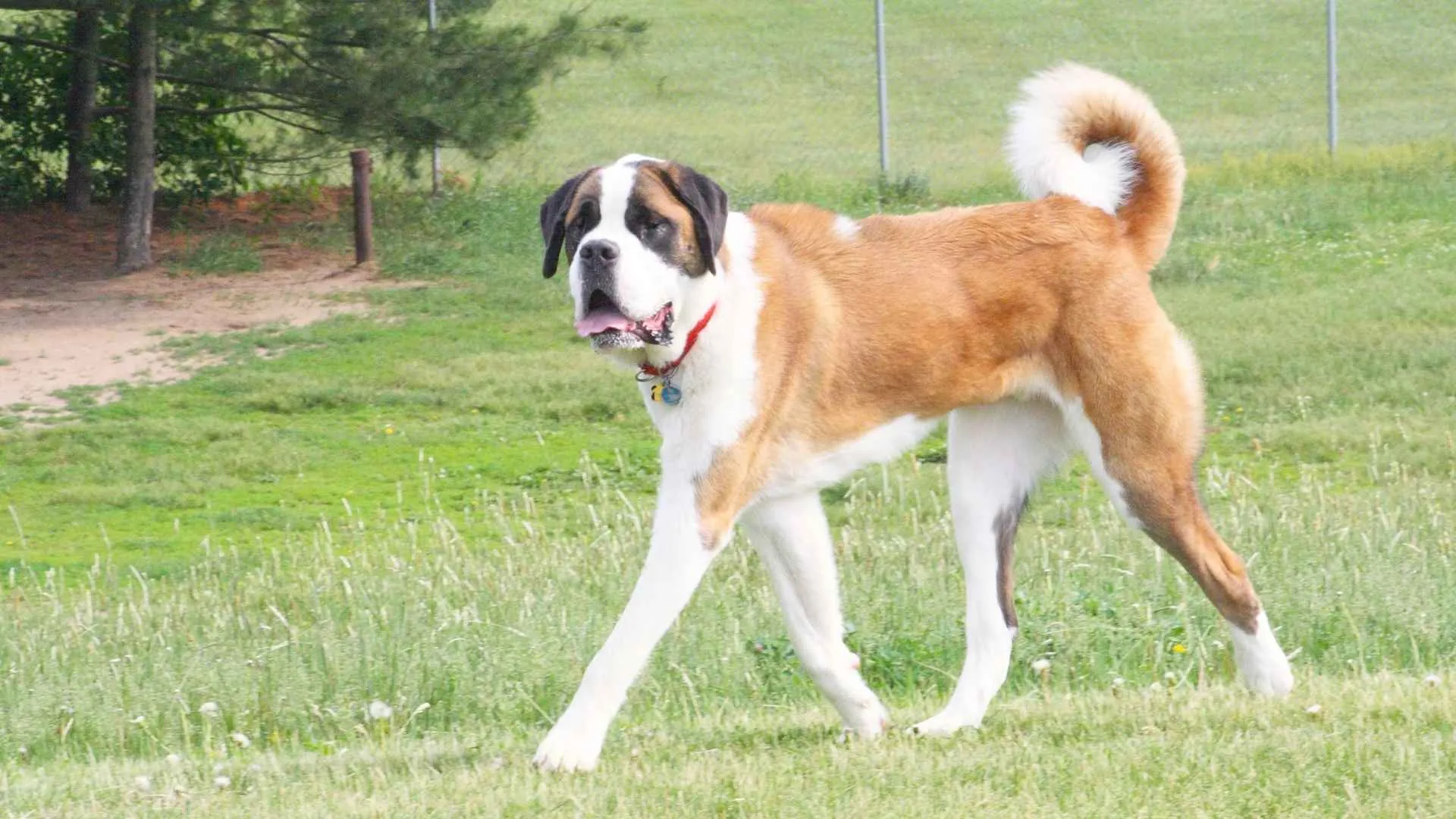
Also affectionately known as the “Barryhund,” the Saint Bernard has earned a legendary reputation for saving lives in the snowy Alps. Bred by monks at the Saint Bernard Monastery in the 16th and 17th centuries, these massive working dogs were developed to locate and rescue lost travelers crossing the perilous Great and Little St. Bernard Passes.
With a towering height of up to 30 inches and a weight range of 120 to 180 pounds, their sheer strength and endurance make them naturally suited for mountainous terrain. With their expressive eyes, thick coat, and unmistakable size, they’re as iconic as they are capable.
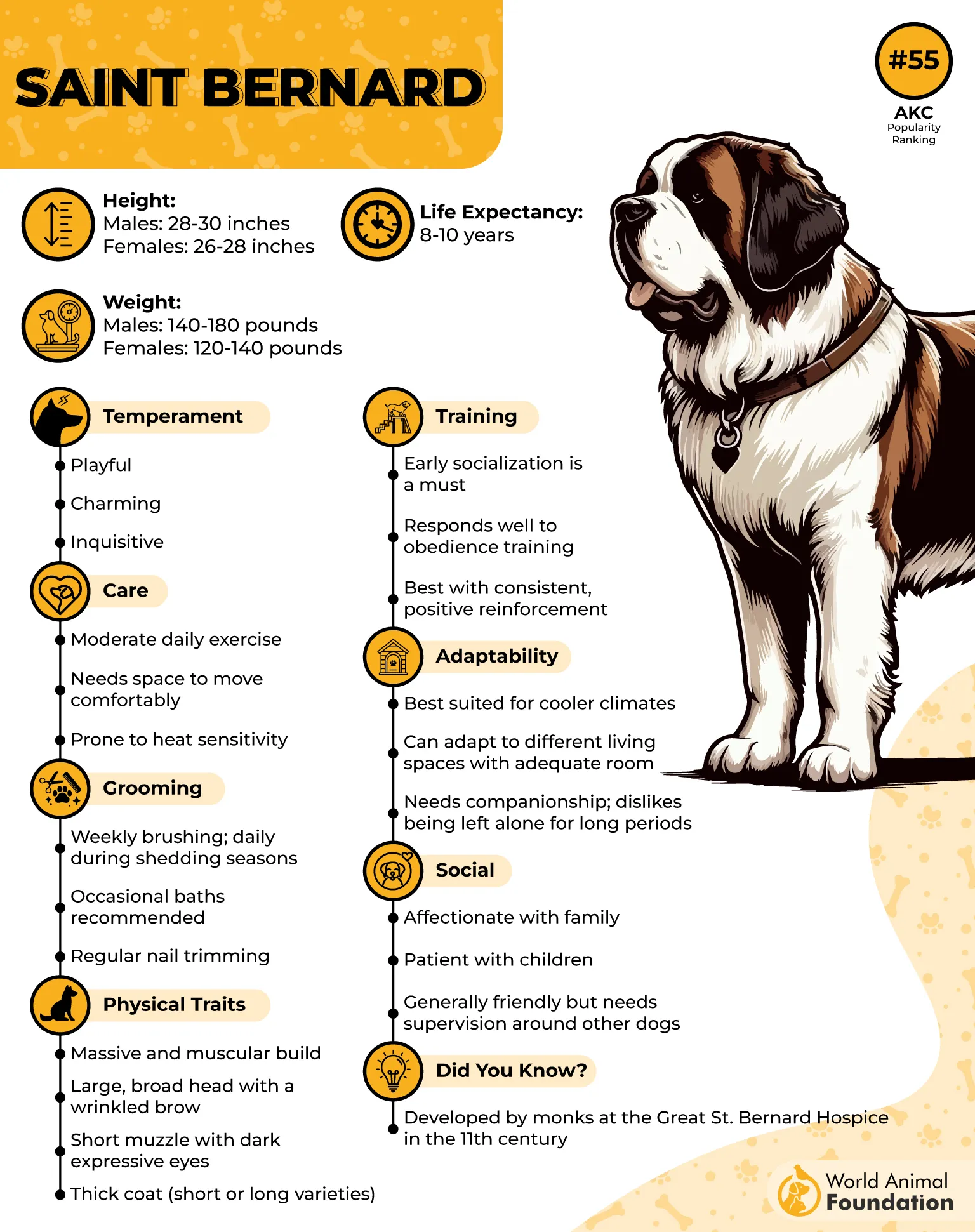
Care Needs
Saint Bernards are affectionate dogs who love spending time with their family and engaging in playful activities, as per PetMD. Saint Bernards need moderate exercise—typically, one 30-minute walk a day is enough, though they’ll gladly join for a longer hike. Despite their laid-back demeanor, they require space to move comfortably.
Their dense, water-resistant coat helps them thrive in cold climates, but also means routine grooming is essential. Be ready for drool—this breed is known for it. These affectionate dogs love being around family and do best when involved in daily life.
Fun Fact: The most famous Saint Bernard, Barry, reportedly saved about 40 lives in the Alps between 1800 and 1814.
5. Great Pyrenees
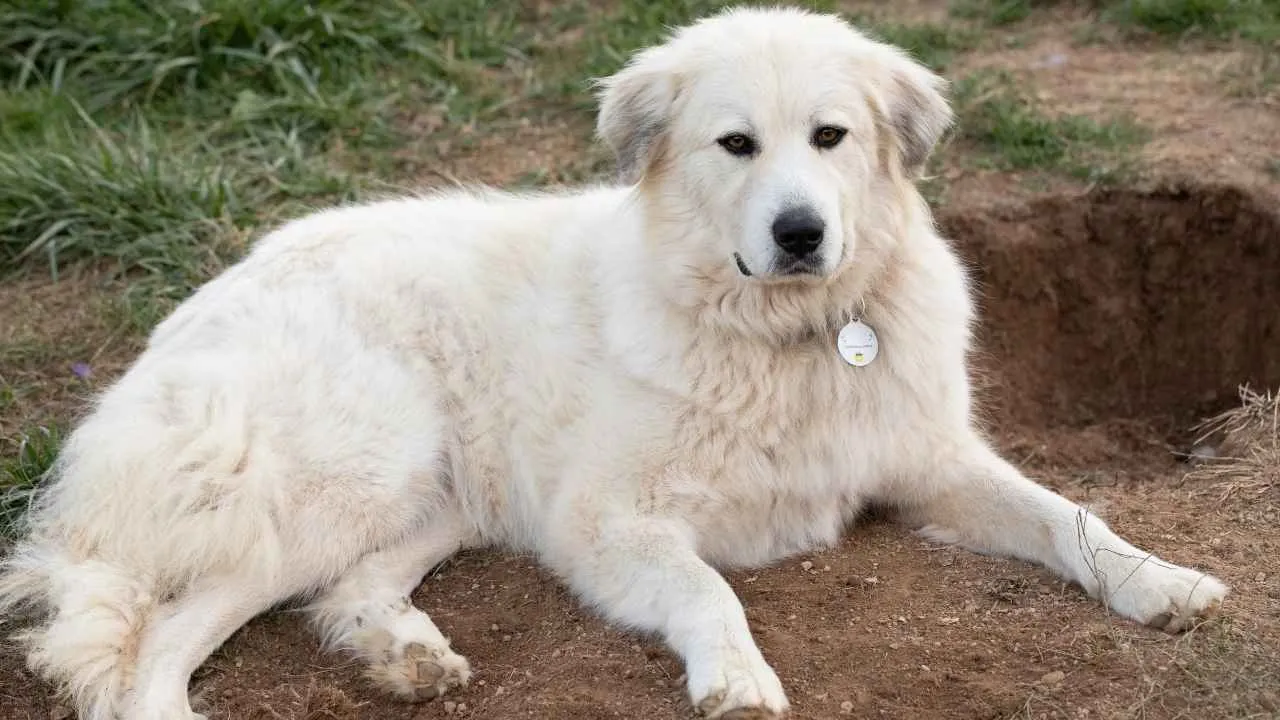
Also known as the Pyrenean Mountain Dog, the Great Pyrenees traces its roots to the Pyrenees mountain range between France and Spain, where it was originally bred to guard sheep from predators like wolves and bears.
This noble breed dates back to between 1800 and 1000 BC and even served as a cart-puller and contraband carrier during World War I. Towering at 25 to 32 inches and weighing between 90 to 125 pounds, the Great Pyrenees commands attention with its impressive stature and thick, white, weather-resistant coat.
WebMD states that Great Pyrenees dogs are graceful and highly observant in nature. With a calm demeanor and deep loyalty to family, this breed is both a capable guardian and a gentle home companion.
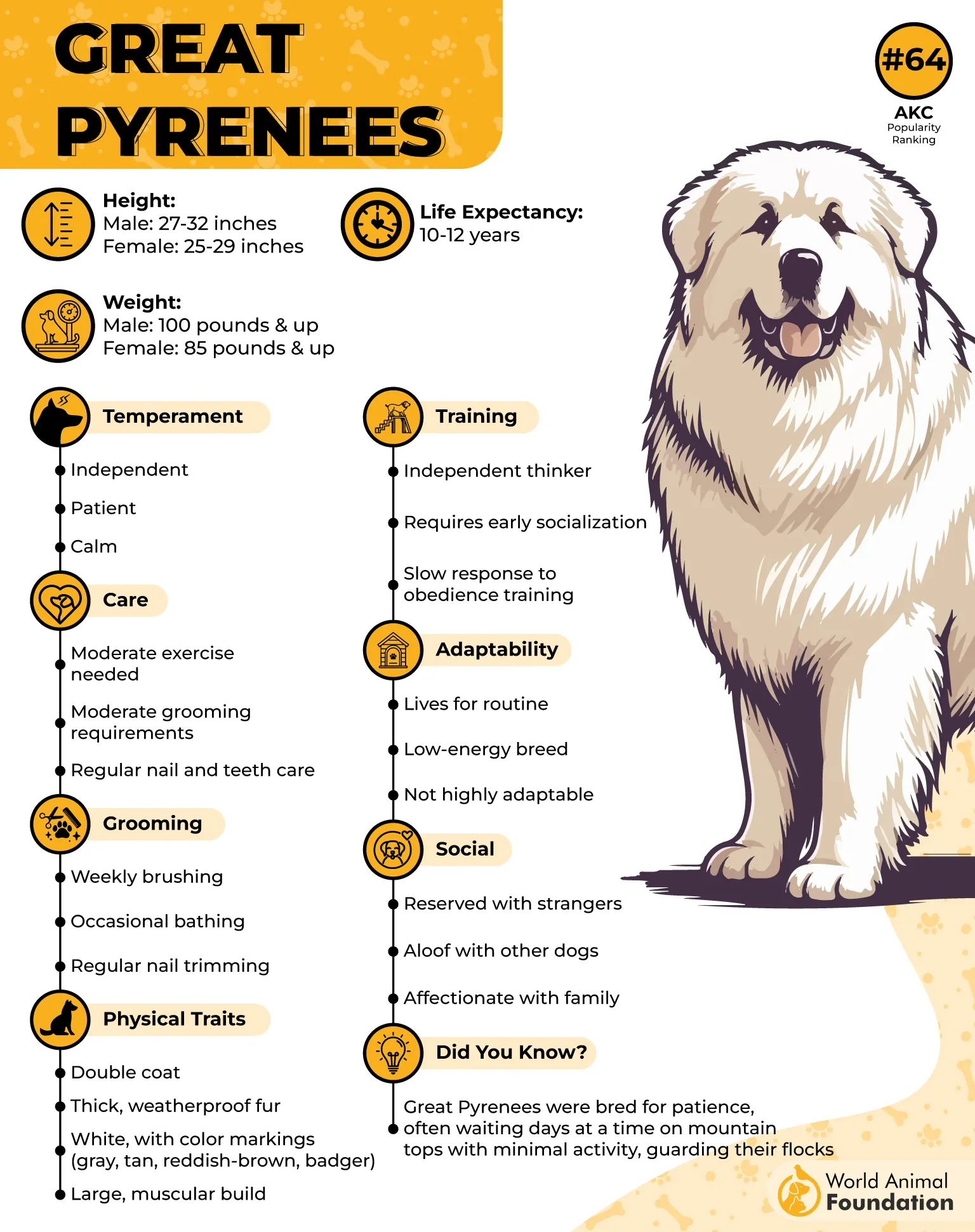
Care Needs
Despite their fluffy, long-haired appearance, these loyal dogs are relatively low-maintenance in grooming thanks to their dirt- and tangle-resistant coat. They require moderate daily exercise and appreciate calm, structured routines.
Early socialization and training are essential, especially given their independent nature. These dogs also benefit from alone time but need clear leadership to stay well-behaved.
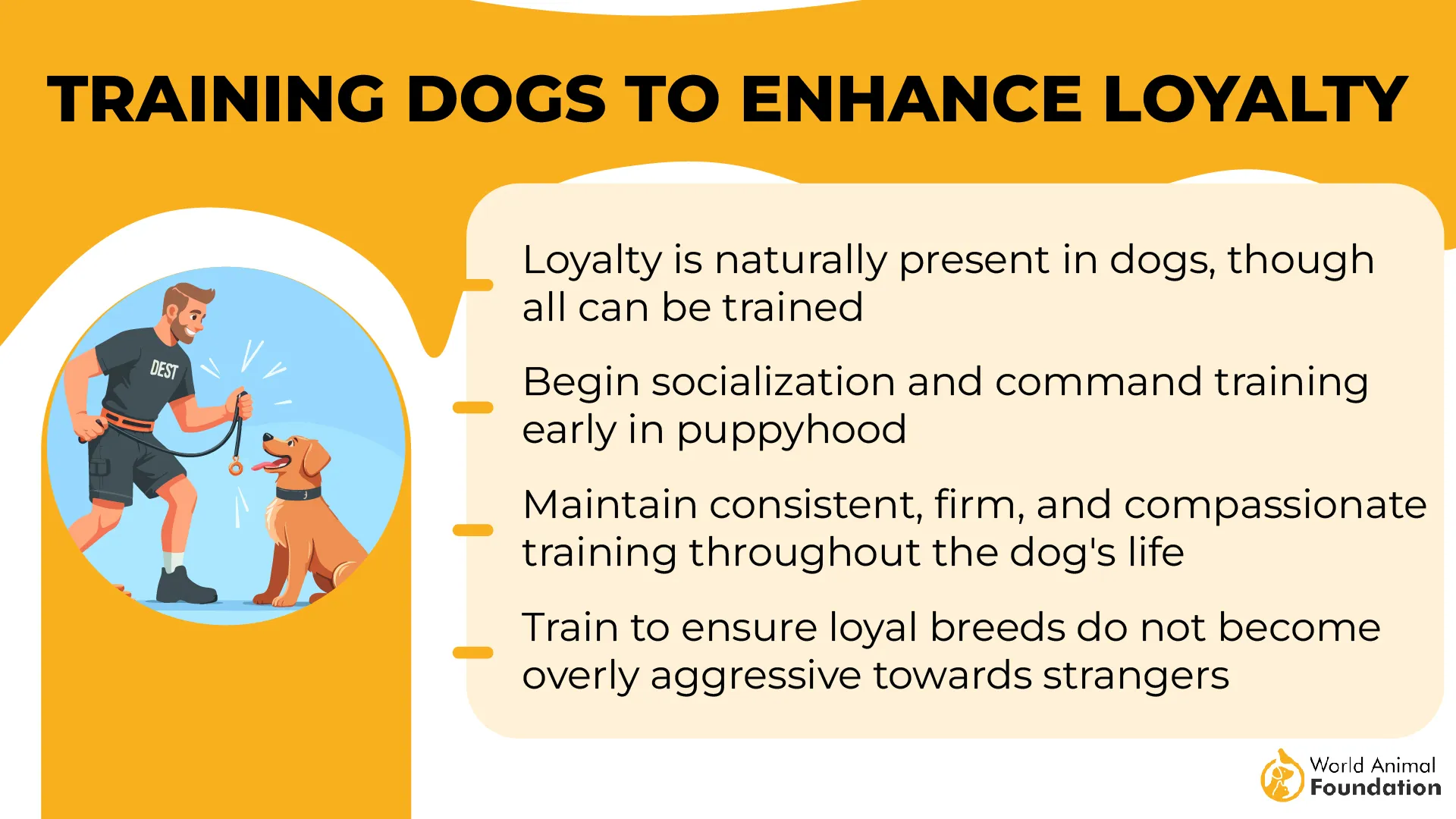
Fun Fact: Once a court favorite in 17th-century France, the Great Pyrenees has remained a beloved guardian and symbol of strength throughout history.
6. Newfoundland
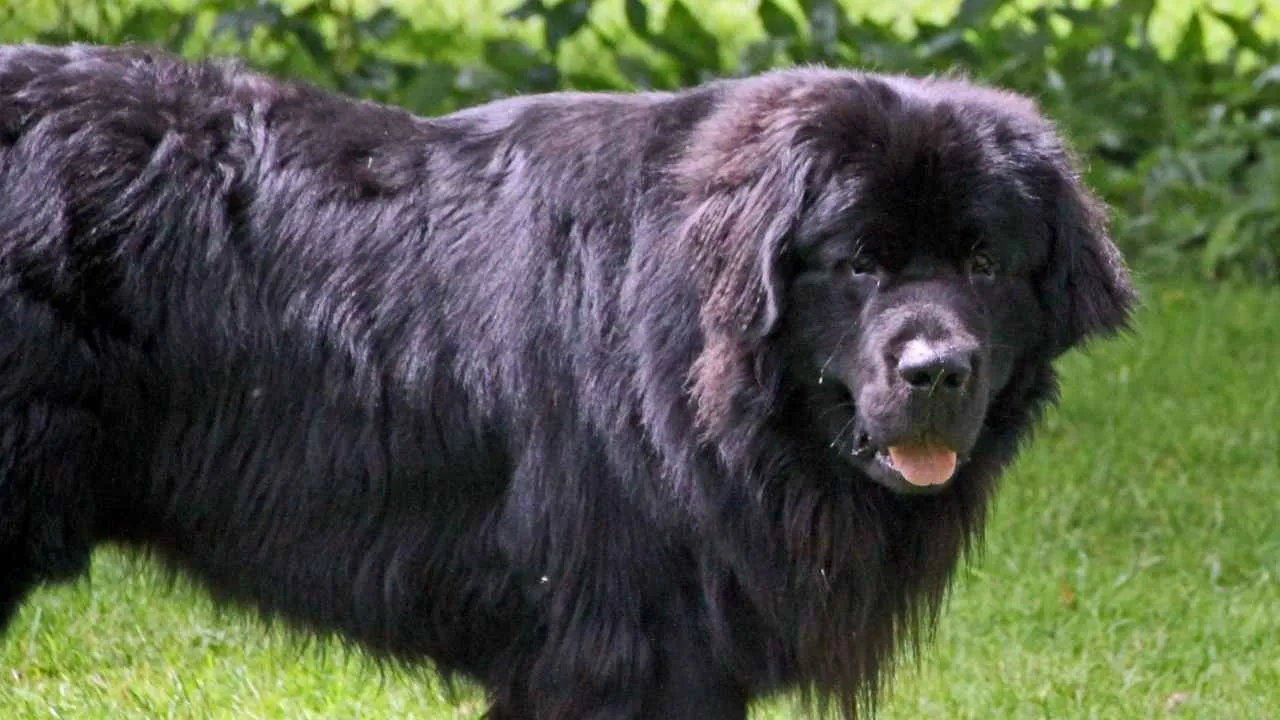
Also affectionately known as the Newf, Newfie, or “Nanny Dog,” the Newfoundland is a giant among working breeds. Originally developed on Canada’s Newfoundland island—likely from native dogs crossed with Great Pyrenees brought by Basque fishermen—this gentle giant stands 26–28 inches tall and weighs between 100–150 pounds.
With powerful hindquarters, webbed feet, and a thick, oily double coat, Newfoundlands are built for endurance in cold, rugged environments. Though not a native mountain breed, their strength, calm demeanor, and ability to withstand icy terrain make them excellent companions in high-altitude living.
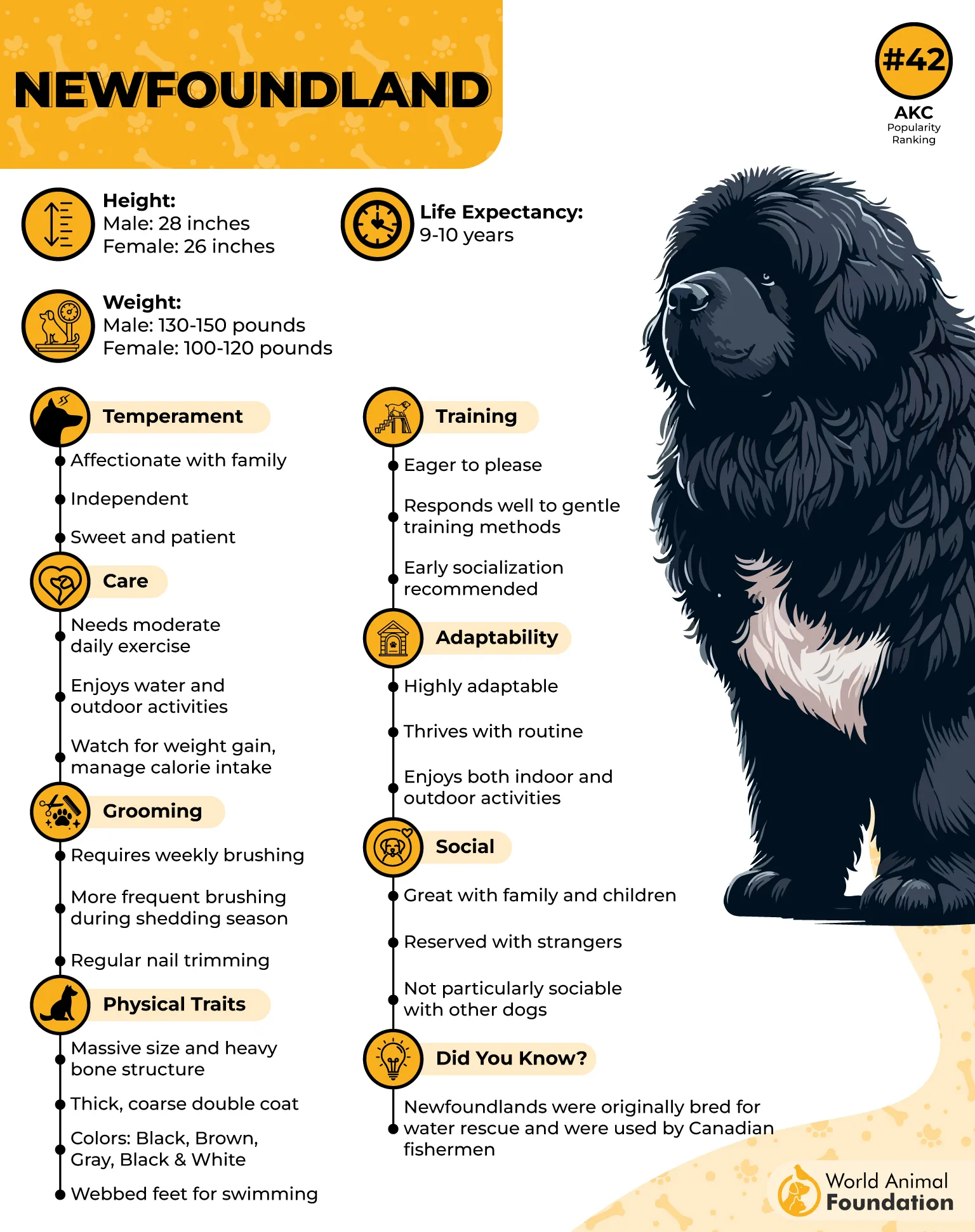
Care Needs
Newfoundlands require consistent grooming to manage their dense double coat, which sheds year-round. Regular brushing helps prevent matting and reduces excess fur around the home. Due to their size and drooling tendency, daily wipe-downs and upkeep are part of the routine.

Despite the maintenance, their sweet nature and loyalty make the effort worthwhile. Newfies also need daily moderate exercise to maintain their health, especially in cold-weather mountain climates where they thrive.
Fun Fact: A Newfoundland named Seaman accompanied the Lewis and Clark Expedition, acting as both a guard dog and hunting companion throughout the historic journey.
7. Alaskan Malamute
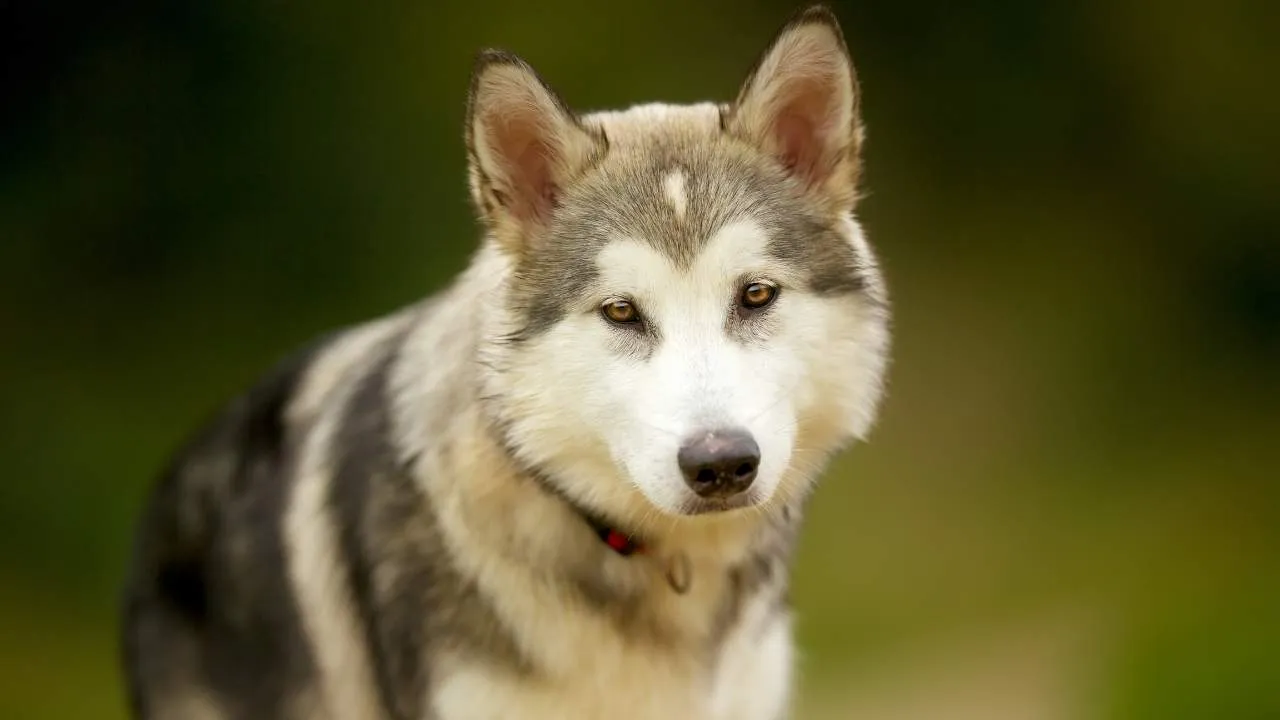
Also known as the “Mal,” the Alaskan Malamute is a robust and ancient sled dog breed originating from the Arctic region. Developed by the Malemiut people of Alaska, this powerful working dog stands 23–25 inches tall and weighs between 75–85 pounds. With a broad head, upright ears, and a striking plume-like tail, its appearance is both noble and enduring.
Most often seen in black and white or gray and white, Mals frequently sport distinctive mask-like facial markings. They’re prized for their strength, endurance, and warm, weather-resistant double coat—perfect for high-altitude climates.
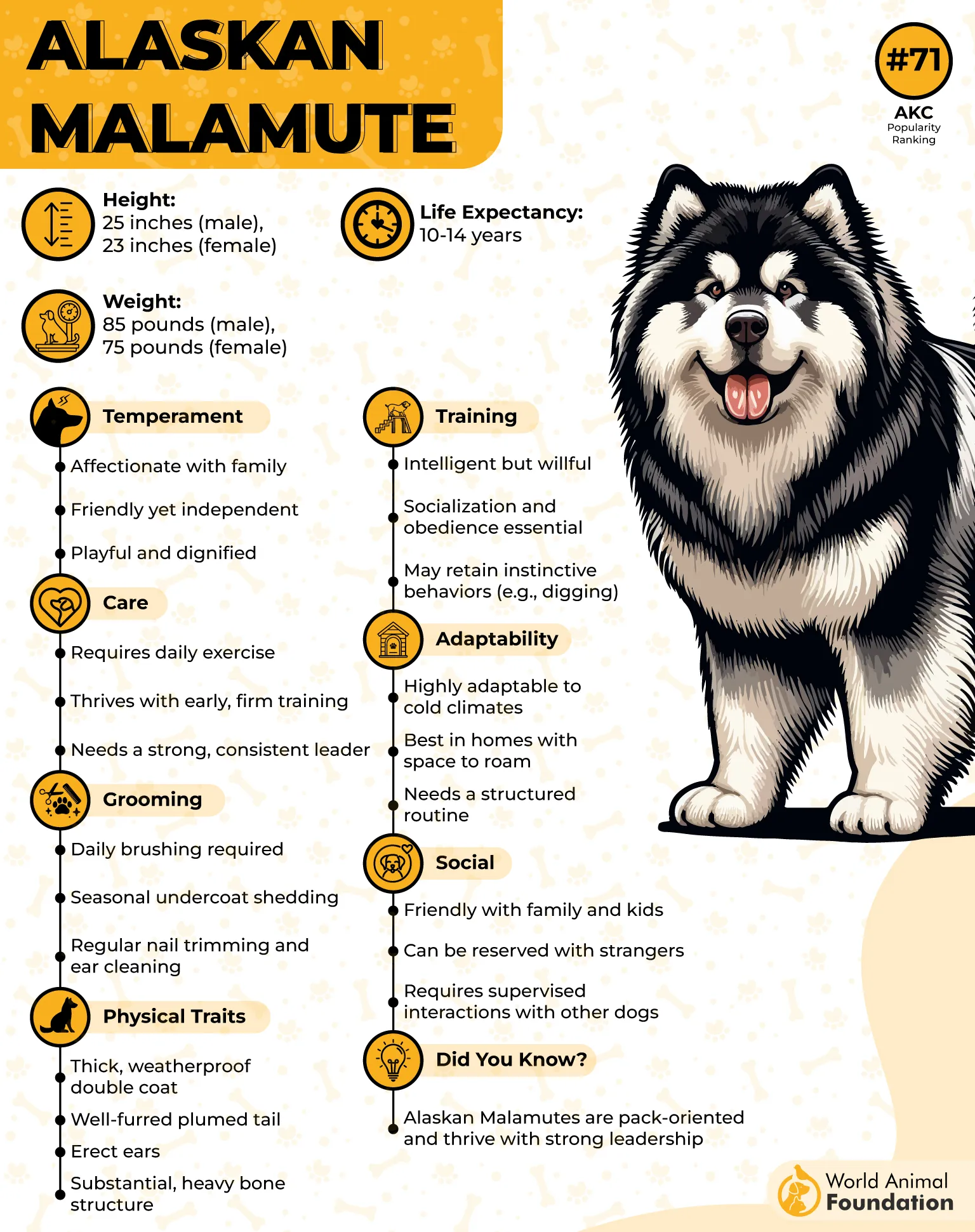
Care Needs
Alaskan Malamutes require significant daily exercise to stay healthy and mentally stimulated. These intelligent dogs thrive on challenge and companionship. Without enough activity or social interaction, they may become destructive out of boredom.
Regular physical exertion and mental engagement are crucial to their well-being, especially in demanding mountain environments where they feel most at home.
Fun Fact: The Alaskan Malamute not only served in World War II and early Antarctic expeditions, but also inspired Chewbacca from Star Wars and gave Indiana Jones his iconic name.
Conclusion
Living at high elevations means embracing colder temperatures, thinner air, and rough terrain, conditions that not all dogs are built to handle. Thankfully, certain breeds have not only adapted to these environments but thrive in them. From the strength and endurance of the Alaskan Malamute to the familiar presence of the Bernese Mountain Dog, these canines are more than companions; they’re mountain-tested partners ready to meet nature’s challenges alongside you.
In addition to the popular choices already explored, breeds like the Greater Swiss Mountain Dog, Appenzeller Mountain Dog, and Entlebucher Mountain Dog offer exceptional strength, agility, and loyalty for alpine living. The Caucasian Shepherd Dog, known for its protective instincts and resilience, is also highly suited for guarding homes or herds in high-altitude settings. Whether you’re navigating snowy trails or simply living the elevated lifestyle, choosing the right mountain breed ensures both you and your dog can thrive in the heights.


